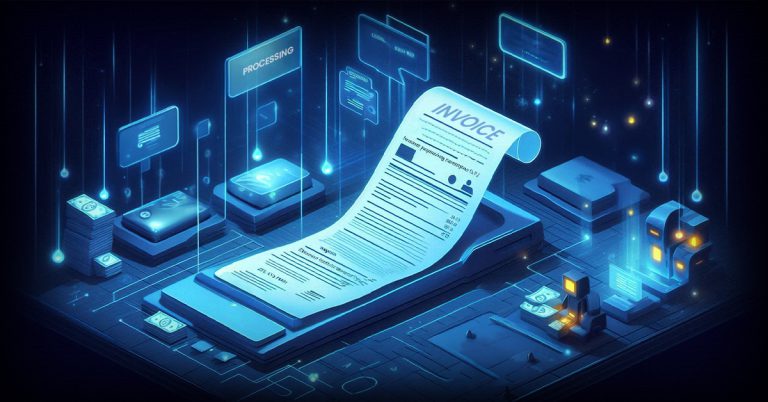Accounts Payable (AP), a vital process in the Finance and Accounts domain, has come a long way in the last few years in adopting automation. Although many still perceive it as simply the process of reviewing bills, it involves much more than that, and managing it can become challenging over time. According to Modern Treasury’s yearly report, ‘The State of Payment Operations in 2022’,1 88% of decision-makers reported facing problems with their payments system. And according to another survey,2 41% of surveyed businesses were planning to change their AP automation solution.
With generic automation, invoice processing can still be a pain point for businesses while managing their short-term payments. Let’s assume your vendor delivers another lot of goods you regularly order, but you notice a difference from the usual pricing. Further, your search for the corresponding purchase order doesn’t yield any results, and the record of the original invoice is unavailable due to a modification in the input format. Now, you’re stuck in a pickle – how much do you pay them? One small irregularity in your automation system can disrupt your AP system and your relationship with your most trusted vendors.
So, is it really that hopeless? NO. Problems with AP automation can be hard to crack, but they’re not impossible to solve – all it takes is some utilization of the right solutions, which can offer huge gains for your company.
Early days of automation in the Accounting Payable Process
As mentioned earlier, automation in the finance industry has evolved from being a simple bookkeeping solution to a complex financial analysis analyzer. It is no longer a process where bookkeepers handle the company’s finances by doing data entry into digital ledgers or bookkeeping software. Although it helped the accounting department to keep consolidated track of their bills, they still need to solve any problem with payment reconciliations.
The introduction of ERP software simplified the accounting process further. The solution helped businesses manage multiple tasks, including financial reporting based on more accurate data and connected processes. Although accounting processes became more streamlined, the efficiency of the processes depended more on the operators’ skills in handling these.
However, companies face more formidable challenges today as they look to expand their business. While it’s true that AP automation can streamline financial settlement activities and simplify complex process flows through a centralized hub, it’s essential to keep in mind that there are still several challenges that need to be addressed before implementing AP automation.
The Account Payable Woes
Restrictions due to organizational policy
Businesses have varying financial management approaches making their AP practices and processes differ as well. A company’s most effective AP system incorporates various critical components like corporate policies, regulatory rules, vendor management policies, infrastructure capacity, security and compliance, approval levels, budget, and working capital strategy.
For global companies, AP policies may be based on regional financial payment closing models to maximize ROI. Here, companies must update their AP policies with a margin that allows the system to pay invoices within identified time durations. Additionally, financial managers must also create a process flow that guarantees a faster but error-free payment approval route when automating recurring payments.
Regarding vendor management, businesses usually ensure that their preferred AP system allows them to submit invoices in multiple formats and channels. Further, it needs to consider the involvement of other departments like procurement, sales, and corporate accounting for finance managers to collaborate better with financial policies and compliance.
When it comes to policy compliance requirements, companies should have a solid understanding of their business-appropriate AP best practices. As business complexity increases, policy constraints become more complicated, necessitating a comprehensive automated AP solution that can handle all policy challenges.
Challenges due to adoption and implementation
In today’s cutthroat business landscape, companies cannot afford to delay liability management due to inefficient and delayed invoice settlement and improve service levels and cash management. Consequently, businesses are increasingly turning to an end-to-end automated accounts payable solutions to deliver results that align with the goals they aim to achieve with its adoption. They are also exploring a complete service outsourcing model to ensure that they meet all laid down SLAs.
Adopting an automation solution should begin with a sharp vision of AP goals, resource capacity, and user acceptance. It allows companies to create a process map to connect the process, including the stakeholders, their roles, technologies used, the steps, cost and time, and the critical metrics in the workflow.
The process map helps finance managers review and understand the process shifts and validate these against internal controls and regulatory policies for liability settlement. It also allows us to understand invoice approval workflow, the internal delegation of duties, and reporting points to determine how an AP automation system will simplify the invoice payment process. Furthermore, to maximize the benefits of AP automation, businesses should be open to the possibility of external delegation of the entire Accounts Payable process to gain operational advantage.
Overcoming the Tech Hurdles
Since multiple automated AP solutions are available on the market, choosing the right one that meets the organization’s requirements is crucial. Usually, they fall under five categories – AP enabling solutions, component solutions, hybrid solutions, purpose-built solutions, and extensible solutions. Each of these solutions has unique purposes with different capabilities. Choosing the wrong solution can be costly for companies as it may not effectively meet their requirements.
The most advanced among the five offerings is the AP solution. These solutions are versatile and futuristic, can seamlessly integrate into multiple ERPs such as SAP, and are easily configurable for diversified business models with minimal complexity. These can scale along with the dynamics of business operations and deliver the same benefits across the entire AP process.
The Future of Automation in Accounts Payable
As the issues mentioned above have far-reaching consequences in consolidating a business, the need for more advanced automation solutions has grown exponentially. However, the new buzzword, intelligent automation that leverages artificial intelligence and machine learning to automate complex financial processes, is now here for companies to leverage.
Intelligent automation can analyze large amounts of financial data in real-time, allowing businesses to make more informed decisions. It can also automate tasks too complex for traditional automation methods, such as financial analysis and forecasting. Another critical benefit of intelligent automation is that it can reduce errors and improve data accuracy using technologies such as intelligent OCRs, which extract clean information from processed documents. Further, the machine learning algorithms used in intelligent automation can learn from previous errors and refine their algorithms to reduce the likelihood of future errors.
The use of intelligent automation or Intelligent Document Processing (IDP) solutions also has the potential to reduce costs and improve efficiency. Businesses can minimize their reliance on manual labor by automating routine tasks and freeing up valuable resources. It also allows them to focus on elevating their performance with improved visibility into cash flow, better invoice tracking capabilities, and integration with analytics solutions for better insights into financial trends, resulting in increased operational efficiency and better organizational performance.
Why Adopting an IDP solution for Automating AP is the Smart Choice?
Introducing IDP into AP processing has multiple benefits, as companies can improve efficiency and control over their spending. Implementing DocVu.AI’s Intelligent Document Processing solution can help companies receive all their invoices electronically, straight into their financial system — from Day One. Not only does this increase the control over their spending, but it also helps ensure that suppliers get paid on time and in the right amount every time.
Matching and verification: DocVu.AI’s ICR technology supports better verification of invoices with three-way matching that involves purchase orders, receipts, and invoices. It matches the payment amounts, keywords, and categories to ensure accuracy and distinguish any inconsistencies in quantities or prices. Consequently, they can easily access information from approved documents and record them in one place to improve accessibility and transparency across departments. It also allows organizations to manage their cash flow, track expenses better and prioritize where funds are being allocated, while reducing discrepancies and redundant data entry.
Improve cost overhead: IDPs help identify areas of overspending and opportunities for cost control by providing insights into the performance of different departments involved in accounting and ROI on various projects. Using ICR technology in AP automation software can also efficiently digitize documents using straight-through processing. DocVu.AI also minimizes personnel costs by processing large invoice volumes without additional staff.
Managing compliance and reducing frauds: DocVu.AI ensures compliance with IRS, tax, and industry regulatory requirements, detects fraud, and reduces erroneous transactions. It allows companies to flag expenses that violate policies and reject approval using pre-trained business rules. Naturally, it ensures timely and accurate vendor payments while preventing double billing and overpayments. Also, this audit trail enables teams to review all financial activity and quickly identify discrepancies, mainly when dealing with check or ACH transfer payments.
Available as a Managed Service as well: Apart from the benefits DocVu.AI brings to the table as an ideal solution to automate AP Processes, it is also available on a Managed Services model as well. You will be supported by a partner who genuinely wants to see your business succeed. The Managed Service Provider will propose solutions that are effective and long-lasting, not provisional measures that are merely expedient. You will work with a partner who is intimately familiar with your industry and the solutions you use, and hence a provider with long-standing partnerships with clients that resemble your own organization.
So, what are the next steps…
Very simple. Future-proof your business with DocVu.AI’s AP solution or managed service model. Harness its capabilities to manage critical sides of the AP process. This starts from capturing data in invoices to creating approval and exception workflows and finally routing this data into your downstream ERP systems. Organizations can gain enhanced visibility and insights into their cash flow, and as a result, businesses can anticipate increased profitability. Give DocVu.AI a try today to find out how easy it is!
- https://www.moderntreasury.com/state-of-payment-operations-2022
- https://www.forbes.com/sites/forbestechcouncil/2022/04/11/youve-digitized-your-accounting-processes-but-are-you-more-efficient/?sh=5f9193dd12bb






